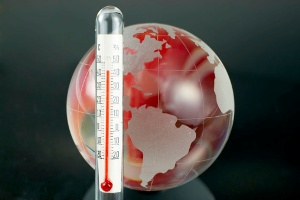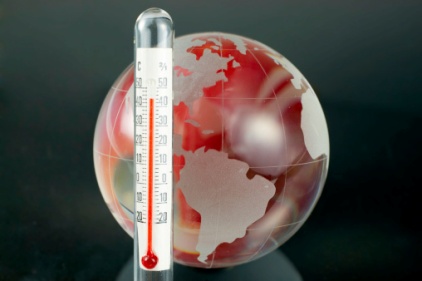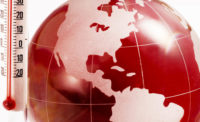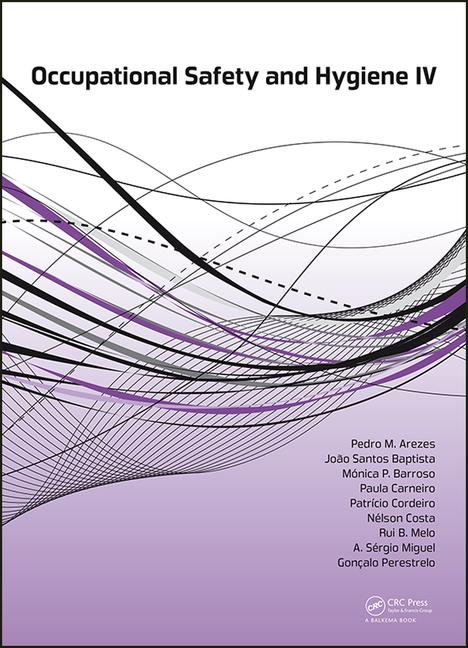 Climate change could have a significant impact on worker productivity – particularly in certain parts of the word, according to a study published in the March issue of the journal, Nature Climate Change.
Climate change could have a significant impact on worker productivity – particularly in certain parts of the word, according to a study published in the March issue of the journal, Nature Climate Change.
Oceanographer John Dunne and his team of researchers found that over the past two decades, climate change has caused a 10 percent decrease in working capacity during the peak summer season. That trend is expected to continue and even accelerate, to levels of below 40 percent by the year 2200.
"The gist is that this problem is going to get a lot more severe in the future," said Dunne, an oceanographer with the National Oceanic and Atmospheric Administration's Geophysical Fluid Dynamics Laboratory, in Princeton, N.J. "And while the human population has a lot of adaptations for heat stress, we need to have guidelines and be prepared."
| The worst-case scenario: A global drop in worker capacity to less than 35 percent. |
The rising humidity which accompanies greenhouse gas emissions mean that steamy, hot tropical regions will increase in size, heat and discomfort, making it impossible for unprotected outdoor laborers to work productively or safely during the hottest times of the year.
Heat stroke, dizziness and other effects
The U.S. National Institutes of Health noted that the combination of extreme heat and humidity can result in heat exhaustion, heat stroke, dizziness, cramping and rashes.
The researchers used data from the lab's Earth System Model, the U.S. National Centers for Environmental Prediction and the National Center for Atmospheric Research. Collectively the numbers helped to paint a complex picture regarding climate-change consequences for a period that began in 1861 and stretches out to 2200.
At the same time, the authors used widely accepted occupational health and safety standards to gauge when temperature and humidity conditions become unsafe for unprotected outdoor work.
In terms of temperature alone, this metric put one goal post at 77 degrees Fahrenheit, a point at which work activity is not limited by weather. On the other end, 90 degrees was viewed as a "black flag" condition, in which no outdoor activity would be considered safe.
By establishing the 1861 to 1960 period as a base reference, the study authors determined that today's current temperatures reveal that the globe has already warmed by nearly 2 degrees.
That figure, they said, is expected to double by 2050, prompting unsafe heat-stress conditions that will cause global working capacity to fall to 80 percent, on average. This means that, all things equal, during the hottest months laborers in such heat-stress zones would have to work 20 percent less than they could have before 1960, Dunne said.
Technology, policy cause uncertainty
Going forward, many possible scenarios could come into play, Dunne said, depending on shifting greenhouse-gas emission levels, which the team characterized as an "uncertainty" driven by technology, policy and population growth.
But the team calculated that even a relatively good scenario would see a nearly 3.6-degree bump by 2200, translating into a labor-capacity slide down to 75 percent.
And the worst-case scenario? A global drop in worker capacity to less than 35 percent.
"It's also important to understand that that's just a global average," Dunne stressed. "In some places the situation will be much worse than others. For example, in New York the temperature will rise to [84 degrees], whereas in Bahrain, which is at [nearly 83 degrees] now, it will go up to [96 degrees], which is above skin temperature."
"That means a person there would be in perpetual heat stress absent air conditioning," he said. "[In Bahrain], no climatologically safe occupational labor would be allowable during the hottest months of the year, even at night. Effectively, worker capacity would be zero."
One billion billion, one percent less productive
Another expert weighed in on the issue.
"We're talking about a situation that is very insidious because it's so subtle," said Solomon Hsiang, who in 2010, as a postdoctoral fellow at Princeton University's Woodrow Wilson School of Public and International Affairs, published a paper raising questions about the impact of global heat stress.
"The problem is that one individual may not necessarily notice if the risk of heat stress makes him or her 1 percent less productive," said Hsiang, now an assistant professor with the Goldman School of Public Policy at the University of California, Berkeley. "But if you make a billion people 1 percent less productive, that will have a huge global impact."
SOURCES: John Dunne, Ph.D., oceanographer, Geophysical Fluid Dynamics Laboratory, National Oceanic and Atmospheric Administration, Princeton, N.J.; Solomon Hsiang, Ph.D., postdoctoral fellow, Woodrow Wilson School of Public and International Affairs, Princeton University, N.J., and assistant professor, Goldman School of Public Policy, University of California, Berkeley; March 2013 Nature Climate Change




